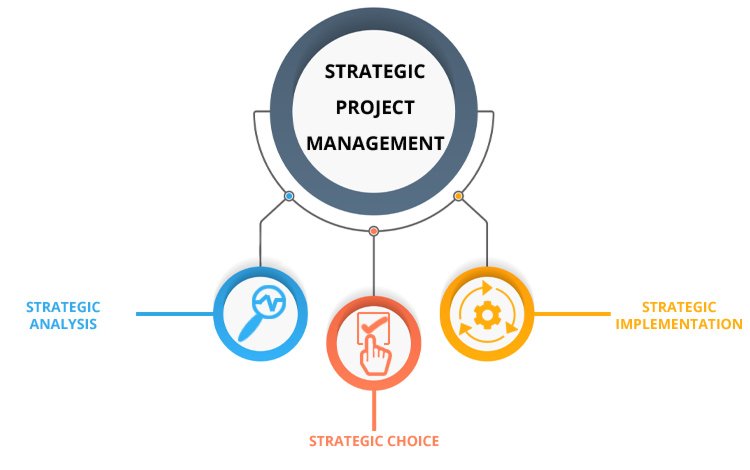
What is strategic project management?
Updated on Tuesday, 17th September 2024 11:46
While project management takes a project from its starting point to its end, strategic project management looks at the big picture.
Strategic project management is a method of managing projects in a way that aligns them with broader strategic goals and objectives of an organisation. It ensures projects not only meet their immediate objectives but also contribute to the long-term success of an organisation.
What is the role of strategic management in a project?
Using a strategic approach to manage projects involves bridging the gap between overarching strategy and operational execution. This helps ensure that projects are not only completed on time and within budget but contribute to the organisation’s strategic objectives, maximising return on investment and driving competitive advantage.
What’s the difference between strategic project management and traditional project management?
Strategic project management is primarily designed to align projects with the broader strategic objectives of an organisation. It emphasises the long-term impacts of projects and encourages project managers to take a holistic approach which considers the wider organisational context.
Alternatively, traditional project management is very project specific; it focuses on achieving short-term objectives such as remaining within budget, and completing the project on time. These projects will often follow a methodology such as PRINCE2® or Agile to deliver the project outputs and meet customer requirements.
The components that drive strategic project management
There are three common components which drive the project to its ultimate goal for the company:
1. Strategic choice
Just how does a company decide which projects to be involved with? Managing multiple projects is a complex task, as such deciding which projects take priority is an important step that requires a strategic choice.
Essentially, it means identifying projects that meet the aspirations and expectations of stakeholders, while also playing to the company’s strengths. There’s also a need to identify and take advantage of external opportunities, while avoiding external threats.
2. Strategic analysis and planning
Successful strategic project management centres around linking each project to the organisation’s mission. Set objectives for your projects that ensure it contributes to wider business goals, and build an effective plan to help you achieve this.
It’s also important at this stage to consider how your project fits into your overarching organisational ecosystem, and address external factors that could affect progress. Project managers often use strategic analysis tools such as PESTLE or SWOT to identify potential issues and minimise their impact.
Strategic implementation
With the scene set, the third stage of strategic management is implementation. Here, strategic project management sets out the long, medium and short-term goals for projects and programmes.
Every company wants to grow. So, they need to take advantage of the opportunities they create for themselves and optimise external influences. Strategic implementation examines all kinds of benefits, including:
- The use and benefits of collaborative tools in projects
- How people and resources are assigned
- The ‘why’ of projects, not just at base level, but from the top of a company
Measuring the success of strategic project management
Measuring the success of strategic project management (SPM) allows organisations to evaluate how effectively their projects contribute to achieving strategic goals. This can help optimise resource management, enhance decision-making, and ultimately leads to greater long-term success.
Strategic project managers often use these four categories to measure project performance and success:
- Finance: Evaluate whether the project remained within budget constraints and delivered return on investment (ROI)
- Customer: Use surveys or feedback forms to measure customer satisfaction and understand whether the project outcomes met their expectations
- Learning and growth: How well has the project contributed to a positive work environment where employees are engaged in continuous learning
- Internal business processes: Measure operational effectiveness and process efficiency. Was the project delivered on time and in adherence with the original scope?
Is strategic project management important?
Yes, and it is a clear benefit to an organisation as it defines its growth path. There needs to be a close, symbiotic relationship between strategic project management and management ‘on the ground’. That’s why it’s an integral part of strong project management leadership skills.










 English
English
 German
German
 Dutch
Dutch
 Polish
Polish